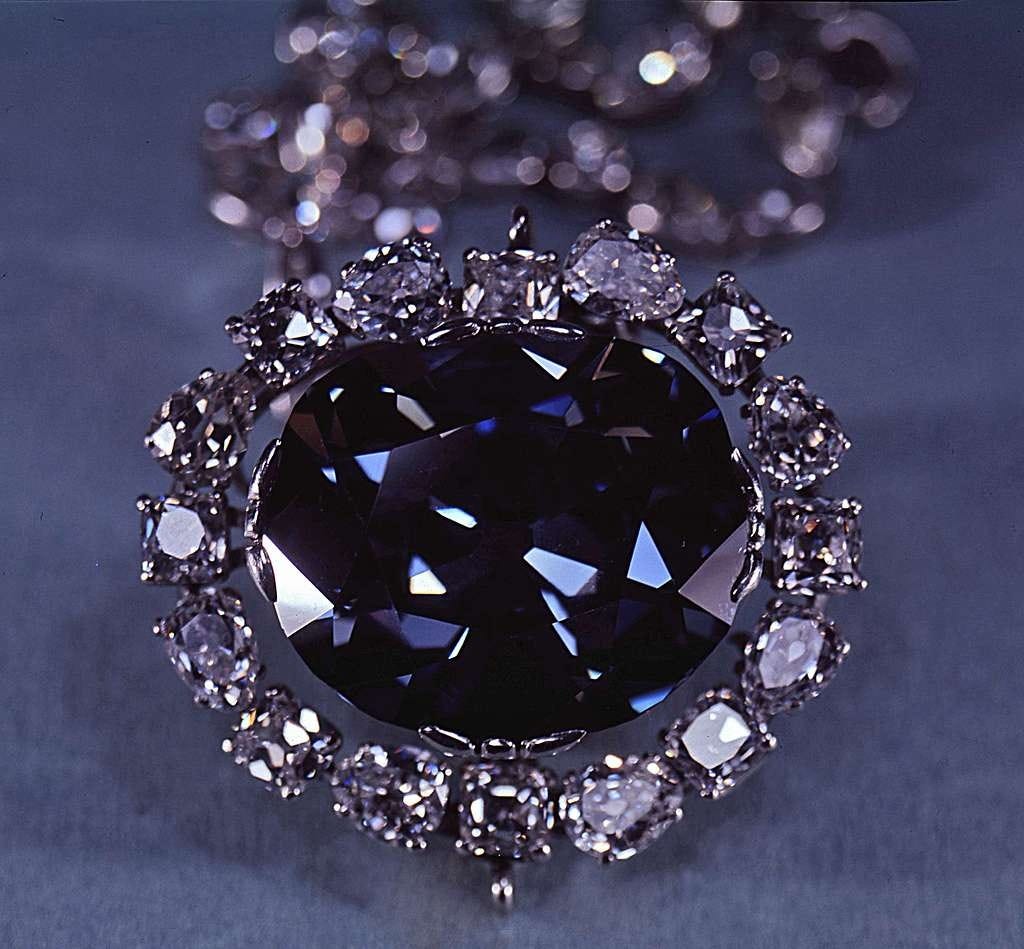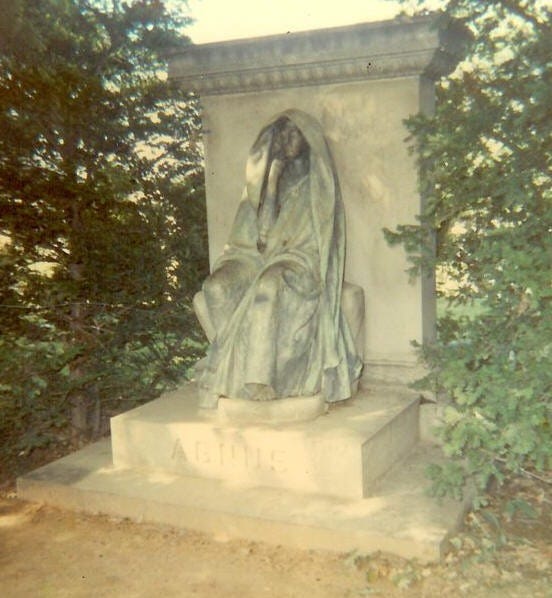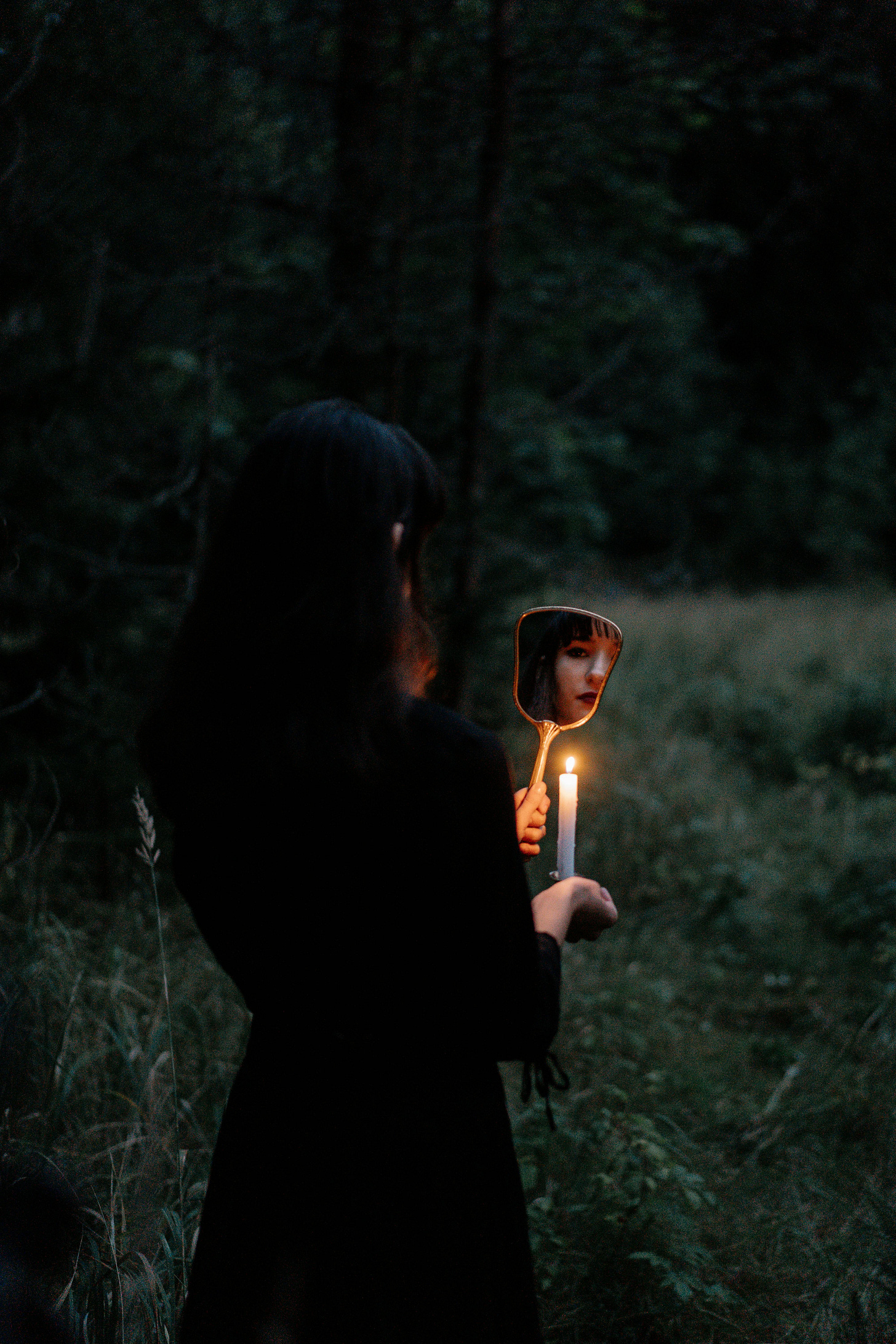
Haunted objects captivate our imagination, bringing our darkest fears to the surface. Among the most notorious is Annabelle, the disturbing doll that inspired a series of films in The Conjuring universe. The real Annabelle gained her sinister reputation in the 1970s after paranormal investigators Ed and Lorraine Warren declared her possessed by a demonic entity.
According to the Warrens, Annabelle was far from a harmless toy—she was reportedly responsible for violent attacks and untimely deaths. Whether you believe the legend or chalk it up to Hollywood’s flair for the dramatic, there’s no denying this doll’s place in pop culture as an icon of supernatural horror.
But Annabelle isn’t alone. Haunted objects, whether demonic dolls, cursed mirrors, bewitched jewelry, sinister statues, or possessed books, have long been a staple of horror storytelling. They reflect our collective fear of the unknown and the idea that even everyday items can harbor dark forces.
Cursed Mirrors
The concept of cursed mirrors taps into the primal fear of seeing something we shouldn’t—a shadowy figure standing behind us or a distorted version of ourselves. In horror, mirrors are a literal and metaphorical reflection of our inner demons, revealing truths we’d rather avoid. From urban legends to classic films like Oculus and Candyman, mirrors have a long history with the supernatural.
Mirrors are seen as portals to other realms or gateways to the soul. Some claim these reflective surfaces can trap spirits or absorb the negative energy of those who look into them. One infamous example is the Myrtles Plantation mirror in Louisiana, said to hold the spirits of a mother and her children who were poisoned on the property. Visitors have reported seeing ghostly handprints appear on the glass, even after it has been cleaned, and some claim to see faces staring back that don’t belong to the living.
And who hasn’t heard of Bloody Mary? According to the legend, you light a candle and stand in front of a mirror in the dark. Then you chant "Bloody Mary" three (or more) times, and the ghostly figure of a woman will appear in the glass. I have no idea why anyone would try this because the vengeful spirit with hollow eyes and a bloodied face, is said to either curse the summoner, scratch their face, or pull them into the mirror realm.
The origin of the Bloody Mary legend is a mystery, but some suggest it may come from Queen Mary I of England, nicknamed "Bloody Mary" for her persecution of Protestants. Others believe the story is rooted in old rituals where mirrors were used for divination, particularly to see glimpses of one’s future or death. Whatever the case, the legend persists.
Bewitched Jewelry
Jewelry takes a dark turn in tales of bewitched or cursed adornments. Stories of rings, amuluts, necklaces, or bracelets imbued with sinister power are a horror staple. One of the most famous is the Hope Diamond, rumored to bring misfortune and death to its owners. With its storied past of thefts, tragic losses, and mysterious deaths, the diamond has become synonymous with ill-fated glamour.

The allure of bewitched jewelry might be its contrast between beauty and danger. These objects, worn so close to the body, feel deeply personal, almost as if they can corrupt the wearer from within. They symbolize the dangers of greed and vanity, and their stories often serve as cautionary tales. Whether it’s a cursed heirloom passed down through generations or a mysterious trinket found in an antique shop, bewitched jewelry plays on our fears of objects too good to be true.
Sinister Statues
Statues evoke unease with their frozen expressions and unblinking eyes. Some give you the feeling they might come to life at any moment. Stories of sinister statues typically involve sculptures cursed by betrayal, revenge, or tragic events. The Black Aggie, a statue once located in the Druid Ridge Cemetery, Pikesville, MD, is a famous example. It was said that anyone who gazed into its eyes would meet a gruesome fate, and it became the subject of countless urban legends before being removed due to vandalism.

In horror, statues are a reminder of humanity’s obsession with immortality. They represent an attempt to capture life in stone, only to become vessels for something far darker. Whether it’s a cursed gargoyle perched on a rooftop or a sculpture imbued with the soul of its creator, sinister statues challenge our perception of stillness and safety, transforming places of reverence into scenes of dread.
Possessed Books
Books have always been a source of mystery, knowledge, and power, but in horror, they often carry a more ominous weight. Possessed books are portrayed as vessels of dark magic, harboring secrets that should never be shared.

One chilling example is the Necronomicon, a fictional grimoire from H.P. Lovecraft’s works, said to drive its readers to madness with forbidden knowledge. Real-life stories of cursed or forbidden books add another layer of intrigue, from medieval grimoires to texts like the Codex Gigas, also known as the Devil’s Bible.
Possessed books hold a unique place in horror because they require an active participant—the reader—to unleash their malevolent power. They symbolize the dangers of curiosity and the pursuit of forbidden knowledge, often serving as warnings about tampering with forces beyond human comprehension. Whether they summon spirits, open portals to other dimensions, or simply bring bad luck, these books remind us that some stories are better left untold.


I have a creepy old Bible and there’s something off about it